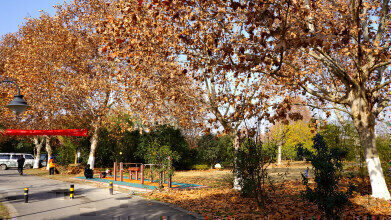Waste Management
What Are Organic Capacitors?
Sep 13 2017
If you’re not part of the solution, you’re part of the problem. This polemic view certainly applies to the leaves of Paulownia trees (otherwise known as Phoenix trees) in China, where residents regularly burn them for fuel – thus contributing to the country’s terrible air quality problems.
However, a team of scientists at Qilu University in Jinan are doing their utmost to turn the leaves into part of the solution. Through an ingenious process, Hongfang Ma and her team have managed to convert the waste leaves into an organic capacitor, essentially turning them into batteries capable of storing energy and limiting pollution in one fell swoop.
Chinese air quality blues
The Chinese nation has long struggled with air quality issues. Widely recognised as the biggest emitter of carbon dioxide (CO2), it was also recently discovered that Chinese power plants emit as much nitrogen oxides (NOx) as all the passenger cars in the world.
Making matters worse is the local custom of burning autumn leaves for fuel. Particularly in northern China, many urban streets are lined with Phoenix trees which shed their leaves after summer. Residents collect up the leaves and burn them as fuel, cleaning the streets at the same time – but releasing deadly toxins such as particulate matter 2.5 (PM2.5), carbon monoxide (CO) and at least seven carcinogens.
Conscious of these ill-effects, the practice has been banned by the government – but an estimated two million tonnes of leaves and other vegetal material were still burned last year in Beijing alone.
Science to the rescue
Keen to find a greener way to deal with the fallen leaves, Hongfang Ma and her team investigated how to transform the waste into a useful product. They first washed and dried the leaves, before grinding them into a delicate powdery substance. This was then boiled in 220°C water for half a day, before being filtered to remove impurities.
The brown carbon microsphere powder that was left behind was then combined with a potassium hydroxide solution and heated to 800°C to corrode its surfaces. The black substance that resulted contained microscopic pores which enhance its surface area, thus allowing it to store more charge.
Although the process isn’t completely free of pollution, it is far less polluting than letting the leaves rot of their own accord or burning them as fuel. What’s more, it also results in an organic battery capable of storing energy for use in other means.
Supercapacitors!
“Turning biomass into capacitors isn’t new,” commented Fred Cannon, a scientist at Penn State University. “Others have done the same sort of thing, only with wood or coal rather than leaves.”
However, after completing their experiment, Hongfang Ma and her team found that the leaf capacitors were far more efficient in retaining energy than their coal counterparts. Indeed, they showed capacitance retention of 91.7%, making them something of a supercapacitor. The only stumbling block to expanding the idea to a commercial scale is the natural variation in the leaves. “Leaves are less consistent in their character, and so supercapacitors made from them would be variable in their character, I would anticipate,” said Cannon.
It’s not the first time that waste material has been converted into a supercapacitor. Three years ago, South Korean scientists were successful in turning used cigarette butts into powerful supercapacitors as well, though the idea has still yet to fully take flight. Watch this space.
Events
May 05 2024 Seville, Spain
May 13 2024 Munich, Germany
May 23 2024 Beijing, China
May 23 2024 Beijing, China
Jun 10 2024 Algiers, Algeria













